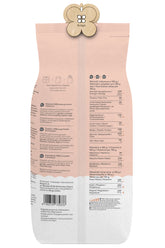In our modern world, we are surrounded by light – be it natural sunlight or the many artificial light sources around us. However, not all light is visible to the human eye. Some forms of light are outside the visible spectrum and can only be perceived with special aids. A fascinating compound that utilizes precisely this phenomenon is fluorescein.
What is Fluorescein?
Fluorescein is an organic dye used in many fields. It belongs to the group of xanthene dyes and is characterized by its intense green fluorescence when excited by ultraviolet (UV) light. This property makes fluorescein a valuable tool in science, technology, and even medicine.
Chemical Structure and Properties
The chemical structure of fluorescein consists of three condensed benzene rings, to which various functional groups such as hydroxyl and carboxyl groups are attached. This structure is responsible for the dye's unique optical properties.
When fluorescein is excited with UV light or blue light, it absorbs energy and enters an excited state. When it falls back to the ground state, the absorbed energy is released in the form of green light. This phenomenon is called fluorescence.
Fluorescein is a water-soluble dye that can take on different colors at various pH levels. In an acidic environment, it appears red; in a neutral range, orange-yellow; and in a basic environment, it glows intensely green.
Applications of Fluorescein
The special properties of fluorescein make it a versatile substance usable in a wide variety of fields.
Medical Applications
In medicine, fluorescein is primarily used in ophthalmology. Here, it is used as a contrast agent to make injuries or diseases of the eye surface visible. When fluorescein is dropped into the eye, it spreads over the cornea and conjunctiva. Under UV light or blue light, these areas then glow green, helping doctors to detect ulcers, injuries, or other abnormalities.
Furthermore, fluorescein is also used in neurosurgery. Here it serves to make tumor tissue in the brain visible, which facilitates the operation.
Technical Applications
In addition to medical applications, fluorescein is also used in technology. For example, it is used as a dye in inks for inkjet printers or as a marking agent in leak tests for pipelines. Due to its fluorescence, fluorescein can also be used in forensic science to make traces of body fluids such as blood or semen visible.
Research and Science
In research and science, fluorescein is a valuable tool. Due to its fluorescence properties, it can be used as a marker for various molecules and structures. For example, it can be used to study the movement of proteins in cells or the permeability of membranes.
Fluorescein is also used in environmental analysis. It can be used as a tracer to track flow paths of water bodies or groundwater currents.
Fluorescence and UV Light
The phenomenon of fluorescence, which makes fluorescein so useful, is based on the interaction between light and matter. When fluorescein is excited with UV light or short-wavelength blue light, it absorbs the energy of the photons. This causes the electrons of the dye molecule to enter a higher energy state.
When returning to the ground state, the electrons release the absorbed energy in the form of light. This light has a longer wavelength than the exciting light and therefore appears green.
This energy transfer is the reason why fluorescein glows so intensely under UV light or blue light. The human eye can perceive this green fluorescence light very well, even though the exciting UV light itself is invisible.
Other Fluorescent Dyes
Besides fluorescein, there are many other fluorescent dyes based on similar principles. Each dye has its own characteristic excitation and emission wavelengths, resulting in different fluorescence colors.
Examples of other fluorescent dyes include rhodamine, coumarin, or Alexa Fluor dyes. They find diverse applications in research, medicine, and technology, depending on their specific properties.
Conclusion
Fluorescein is a fascinating dye that, thanks to its unique fluorescence properties, is used in numerous fields. From medicine to technology to research – fluorescein is a valuable tool for making phenomena visible that would normally be invisible to the human eye.
The glow of fluorescein under UV light is an impressive example of how chemistry and physics interact to create fascinating effects. This knowledge opens up new possibilities for us to better understand and explore our environment.































































































































